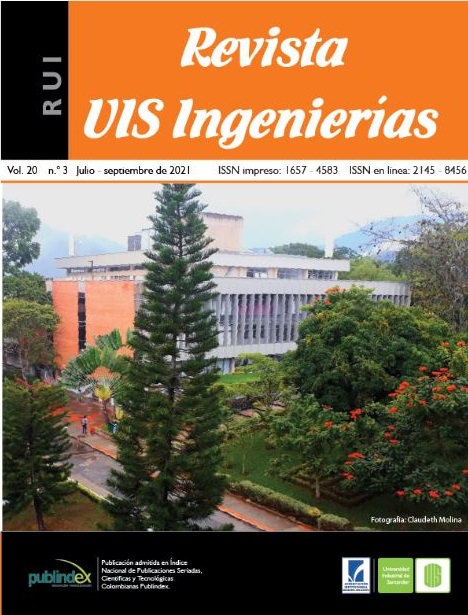Published 2021-06-07
Keywords
- SPARQL,
- biological collections,
- Linked Open Data,
- Resource Description Framework,
- systematization
How to Cite
Abstract
The biodiversity is essential for life and it motivates many efforts for its conservation. One of those efforts is the dissemination of data on plant specimens, which institutions such as the Institute for Research and Preservation of the Cultural and Natural Heritage of the Valle del Cauca (INCIVA) use. The institute develops, stimulates, and supports processes of appropriation, generation, and dissemination of knowledge for the conservation as well as the use of the natural and cultural heritage of Valle del Cauca. However, it does not support these processes with technological tools that integrate specialized techniques that allow the dissemination of knowledge such as the Linked Open Data (LOD). This one allows the publication and linking of information on the Data Web. Therefore, the article presents DATABIO. It is a web application that manages, publishes, and disseminates information from the biological collection of the botanical garden. It is done using a Dataset linked and published on the data web that as the main feature facilitates the updating of its triples every time there are new records in the transactional system. DATABIO was developed thanks to the use of extreme programming as a software development methodology, but it previously required the application of phases for modeling, storage, linking, and data publishing. As a main result, it stands out that the information published complies with the open data scheme of Tim Berners -Lee, obtaining five stars, which facilitates decision-making for institutions that promote environmental conservation.
Downloads
References
[2] D. Vélez et al., “Difusión de datos biológicos en la red como apoyo a la educación ambiental, investigación científica y conservación de la biodiversidad en Colombia”, Renata, vol. 2, no. 4, pp. 49-57, 2012.
[3] K. Giancarlo, B. Acosta, “Sistematización Colecciones biológicas IAvH”, Repositorio Institucional de Documentación Científica, 2017 [En línea]. Disponible en: http://hdl.handle.net/20.500.11761/34074
[4] GBIF, “IPT: Herramientas para la publicación integrada de datos”, 2015 [En línea]. Disponible en: https://www.gbif.org/es/ipt
[5] SIB, “Colecciones en Línea”, 2020 [En línea]. Disponible en: https://colecciones.biodiversidad.co/
[6] C. Castrillón -Arias, C. A. Agudelo-Henao, O. A. Vega, “Plataforma Web para Colecciones Biológicas: Caso Herbario Universidad del Quindío”, Sci. Tech., vol. 23, no. 2, pp. 249-257, 2018.
[7] Y. Alvarado, J. Fernández, R. Guerrero, G. Rodríguez, N. Jofré, “Plataforma para Repositorios Digitales 3D de Colecciones Biológicas”, en XXV congreso argentino de ciencias de la computación, 2019, pp. 428-437.
[8] S. Ortega, A. Guevara, “Darwin Core: Estándar para la Gestión de Datos Biológicos Primarios en la UTN”, en Encuentro latinoamericano Eciencia 2017, pp. 1-19.
[9] INCIVA, “Quiénes somos La Institución INCIVA - Instituto para la Investigación y la Preservación del Patrimonio Cultural y Natural del Valle del Cauca”, 2020 [En línea]. Disponible en: http://www.inciva.gov.co/institucion/quienes-somos
[10] M. León Santos, G. Ponjuán Dante, M. Rodríguez Calvo, “Procesos estratégicos de la gestión del conocimiento”, Acimed, vol. 14, no. 2, 2006.
[11] A. García Holgado, F. J. García - Peñalvo, “Gestión del conocimiento abierto mediante ecosistemas tecnológicos basados en soluciones “open source””, en Ecosistemas del Acceso Abierto, Salamanca, España: Ediciones Universidad de Salamanca, 2018, pp. 147-160.
[12] C. Gonzalo, “Ontologías y la Web Semántica”, 2005 [En línea]. Disponible en: https://www.carlosgonzalo.es/ontologias-y-la-web-semantica/
[13] Z. Ma, M. A. M. Capretz, L. Yan, “Storing massive Resource Description Framework (RDF) data: A survey”, Knowl. Eng. Rev., vol. 31, no. 4, pp. 391-413, 2016, doi: 10.1017/S0269888916000217
[14] M. Lnenicka, J. Komarkova, “Big and open linked data analytics ecosystem: Theoretical background and essential elements”, Gov. Inf. Q., vol. 36, no. 1, pp. 129-144, 2019, doi: 10.1016/j.giq.2018.11.004
[15] H. Firmino, G. Lima, “Reuso de ontologias: uma revisão de literatura no contexto da web semântica”, en Tendências atuais e perspetivas futuras em organização do conhecimento, 2017, pp. 487-497.
[16] TDWG, DarwinCore: una guía de referencia rápida, versión 3.0. Bogotá: SiB Colombia, 2018.
[17] G. de Colombia, “Datos Abiertos - Gobierno Digital”, Ministerio de Tecnologías de la Información y las Comunicaciones, 2014 [En línea]. Disponible en: https://estrategia.gobiernoenlinea.gov.co/623/w3-article-9407.html.
[18] INCIVA, “Ubicación Jardín Botanico INCIVA - Instituto para la Investigación y la Preservación del Patrimonio Cultural y Natural del Valle del Cauca”, 2020 [En línea]. Disponible en: http://inciva.gov.co/patrimonio-turistico/jard-iacute-n-bot-aacute-nico-juan-maria-c-eacute-spedes
[19] J. Chavarriaga, H. Arboleda, G. Lidis, “Modelo de Investigación en Ingeniería del Software: Una propuesta de investigación tecnológica”, Ing. del Softw. y Sist., 2004.
[20] V. Zuluaga, C. Moreno, “Creación de un dataset sobre ecoturismo de los municipios de Riofrío y Tuluá para publicar en la Web de Datos”, tesis de grado, Universidad del Valle, 2016.
[21] R. Moya, “Pandas en Python, con ejemplos -Parte I- Introducción”, Jarroba, 2015 [En línea]. Disponible en: https://jarroba.com/pandas-python-ejemplos-parte-i-introduccion/
[22] RDFLib Team, “rdflib 5.0.0 - rdflib 5.0.0 documentation”, RDFLib, 2002 [En línea]. Disponible en: https://rdflib.readthedocs.io/en/stable/
[23] Apache Jena, “Apache Jena - Apache Jena Fuseki”, 2011 [En línea]. Disponible en: https://jena.apache.org/documentation/fuseki2/
[24] SKOS Simple Knowledge Organization System Primer, “SPARQL Lenguaje de consulta para RDF”, W3C, 2009 [En línea]. Disponible en: https://skos.um.es/TR/rdf-sparql-query
[25] Power Data, “¿Qué es Datahub, Data Lake y Datawarehouse?”, 2018 [En línea]. Disponible en: https://blog.powerdata.es/el-valor-de-la-gestion-de-datos/que-es-datahub-data-lake-y-datawarehouse
[26] Portafolio, “La tecnología, un ‘salvavidas’ para preservar la biodiversidad | Opinión | Portafolio”, Otros columnistas, 2020 [En línea]. Disponible en: https://www.portafolio.co/opinion/otros-columnistas-1/la-tecnologia-un-salvavidas-para-preservar-la-biodiversidad-538683


